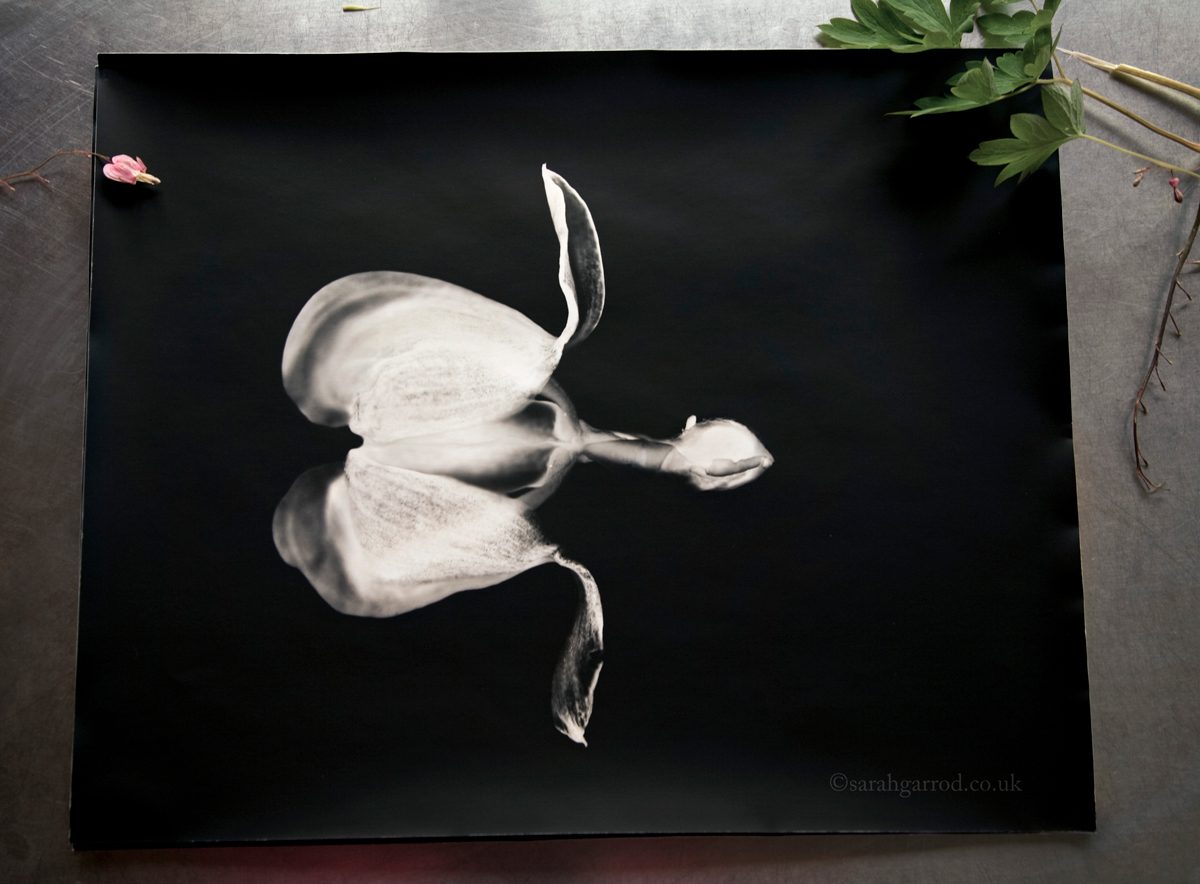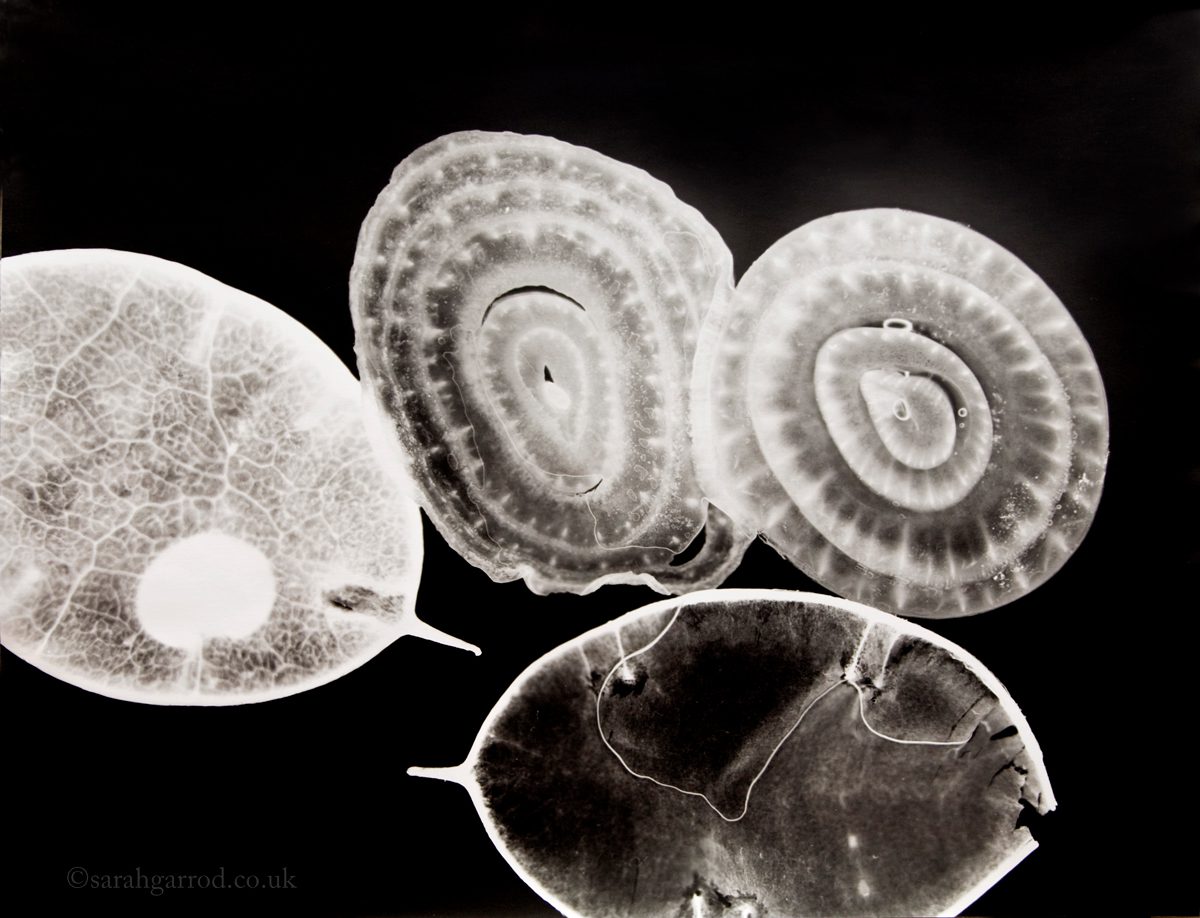Becoming the Camera - Thoughts on Photograms Posted On 22nd July 2021 To Magazine & Alternate

During lockdown I rekindled my love of making photograms. It happened naturally after a summer of making cyanotypes. I was also making emulsions out of plants. My garden became a temporary darkroom. With a photogram - you expose your paper to light (sunlight for photograms), with an object on top, and the area underneath the object remains unexposed, so you end up with white paper in that area, like a shadow but in negative.
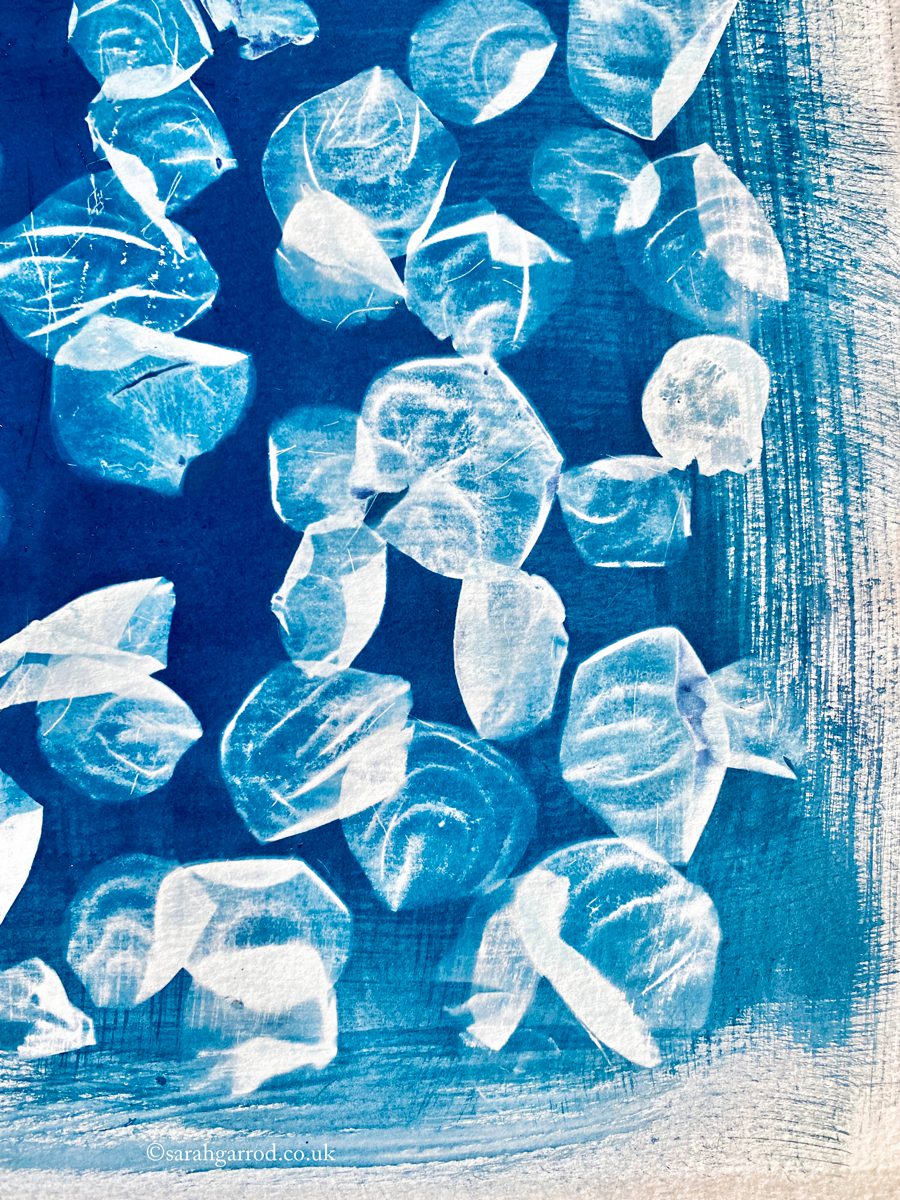
Cyanotype
A lonely weed
The local darkroom re-opened for half-day solo use which means I can’t do all the detailed printing of negatives that I used to do. There simply isn’t time to get the chemicals out, perfect and wash a print, and then scrub down. So one day I found a lonely weed on the path outside the darkroom, and I brought it into the dark and studied it with light under the enlarger. Sometimes plants keep me company and I am sure I am not the only one that talks to themselves in the darkroom ?!?
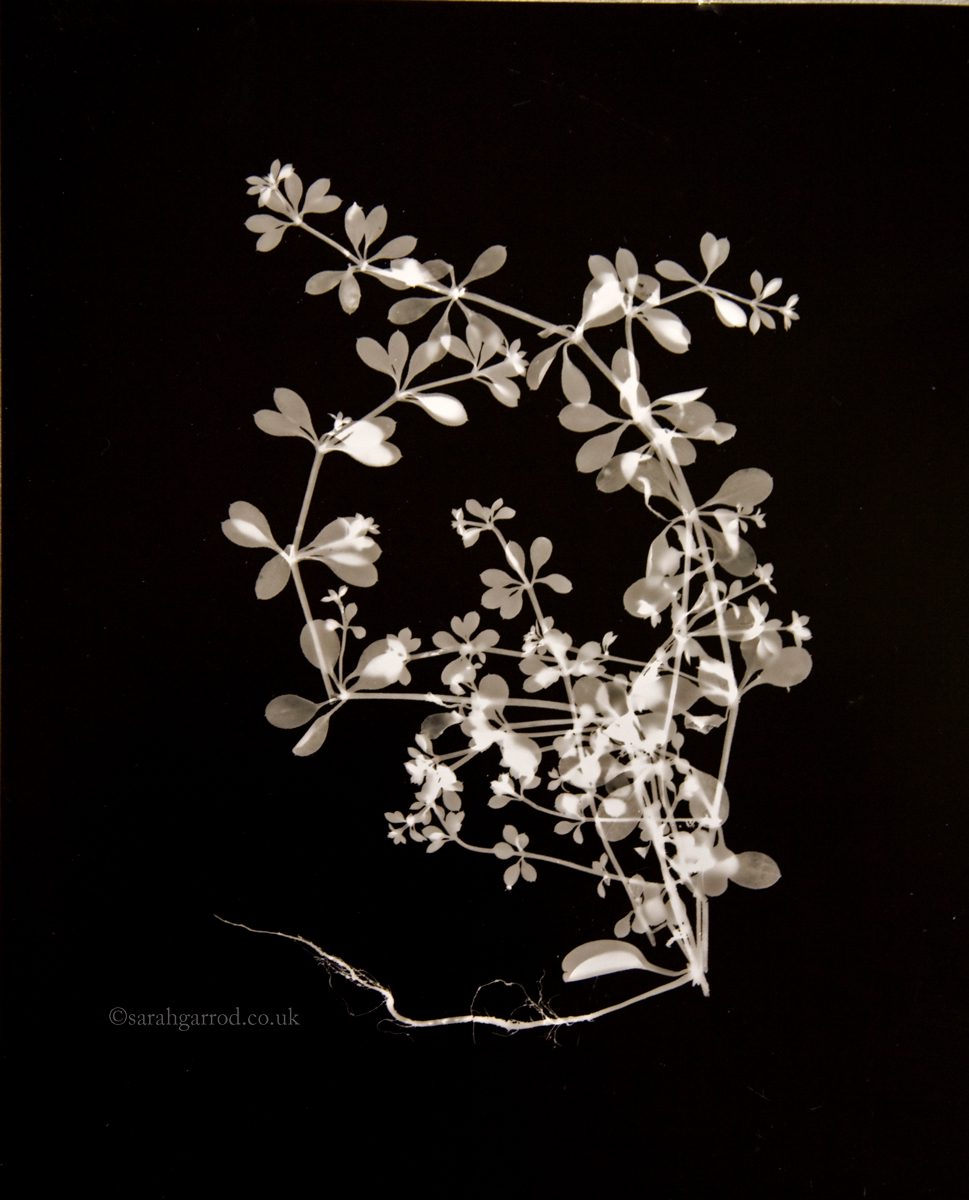
Lonely Weed
Looking for answers
After losing loved ones during the pandemic, I find myself looking for answers in Nature. I’ve been using magnifiers to look really deep into plants. My recent prints blow up tiny plant parts onto 16x24” Ilford fibre paper. It fascinates me how close observation reveals them as other-worldly creatures. Flowers, when stripped of colour, can look like space ships or jellyfish. Everywhere you look, life is connected by an underlying magic and beauty.
- Chelodina Rugosa . Printed on Ilford Fibre Matt 16×24″
- Lumaria . Printed on Ilford Fibre Matt 16×24″
As an experimental photographer I use Kentmere resin-coated paper to test out ideas. I love that paper, it gives me ultra-quick and consistent results and has a satisfying ‘feel’ in the lustre finish. Knowing exactly how those tests translate into fibre paper in my head means I rarely bother with test strips and go straight from the resin print to a fibre version. I buy second hand papers for my experiments too.
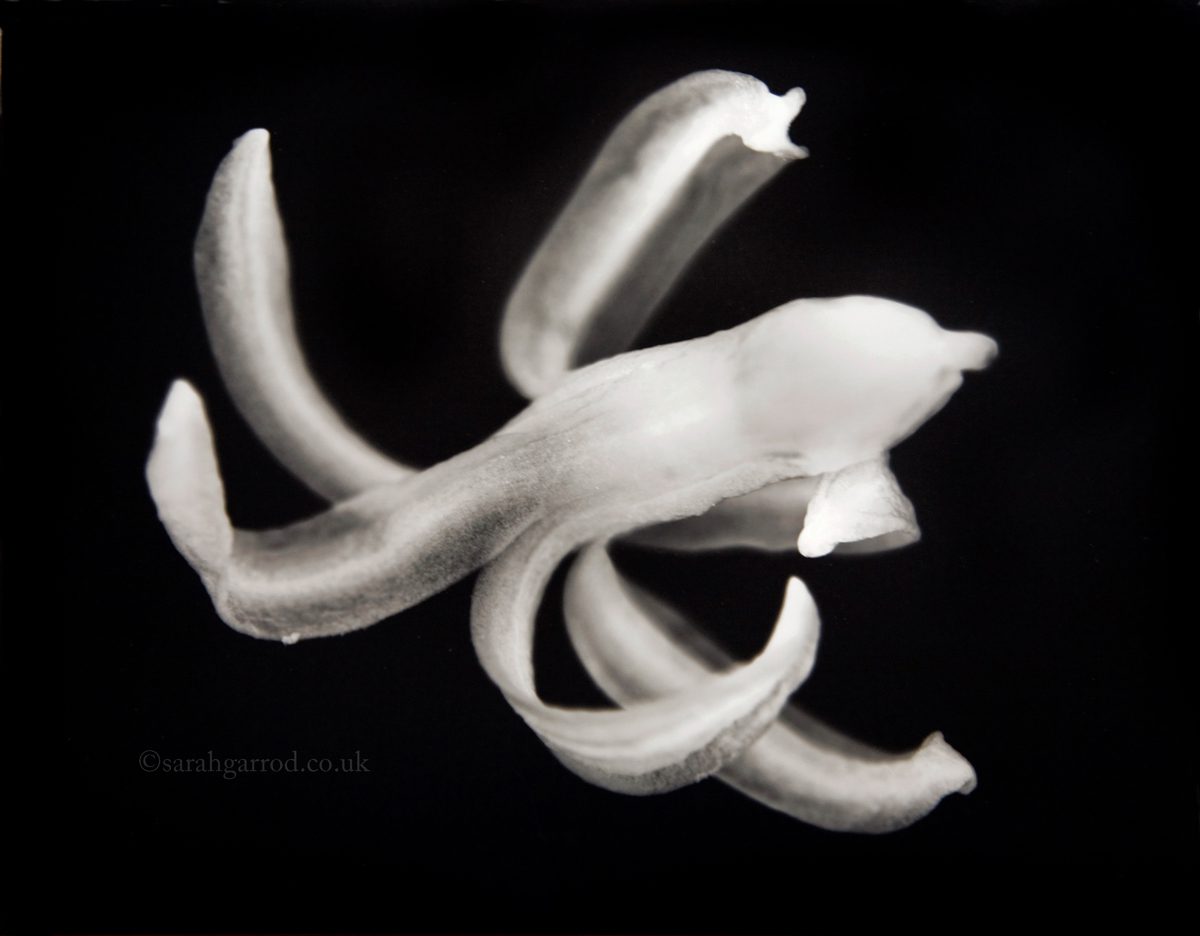
Polyzenia printed on Kentmere RC
Split Grade Printing
I use Ilford Multigrade fibre paper and Multigrade developers to achieve my desired effects. If you don’t use split-grade techniques with photograms you will end up with flat silhouettes. It’s funny but when I mention photograms or cyanotypes to people they often say “ah I did those at school/college”. They were very lucky! But there is a lot more to photograms than simple outlines. You are exploring the very nature of an object - its mass, its transparency to certain wavelengths (different for UV), its reflectivity, its structure, as well as the paper’s exposure characteristics. If you move the object away from the paper and towards the enlarger it can act as a negative, plus you have a penumbra to play with !
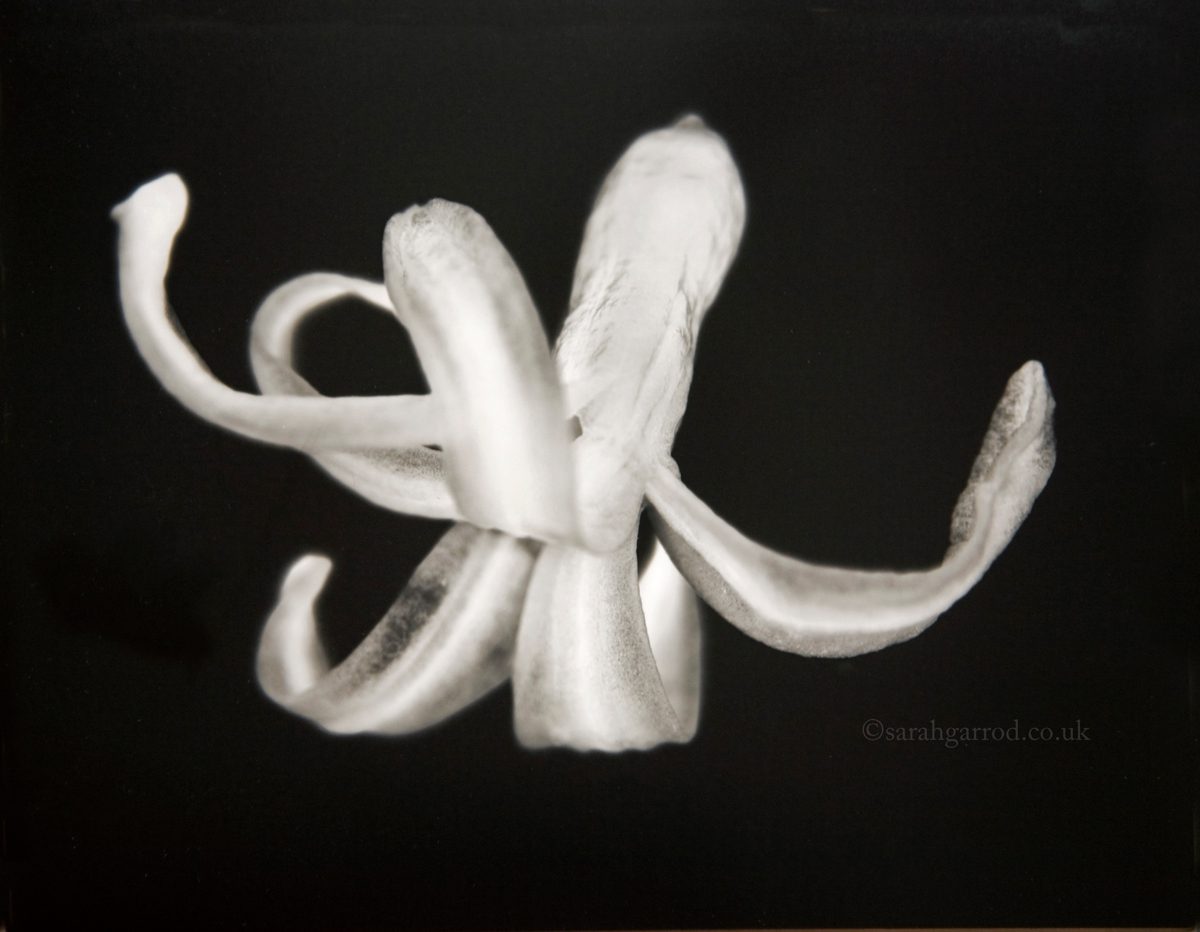
Detail of photogram
Become the Camera
Doing “cameraless” photography is a great way to improve your skills as a photographer and printer. You become the camera. If you can make a good photo without a camera, you truly are a good photographer.
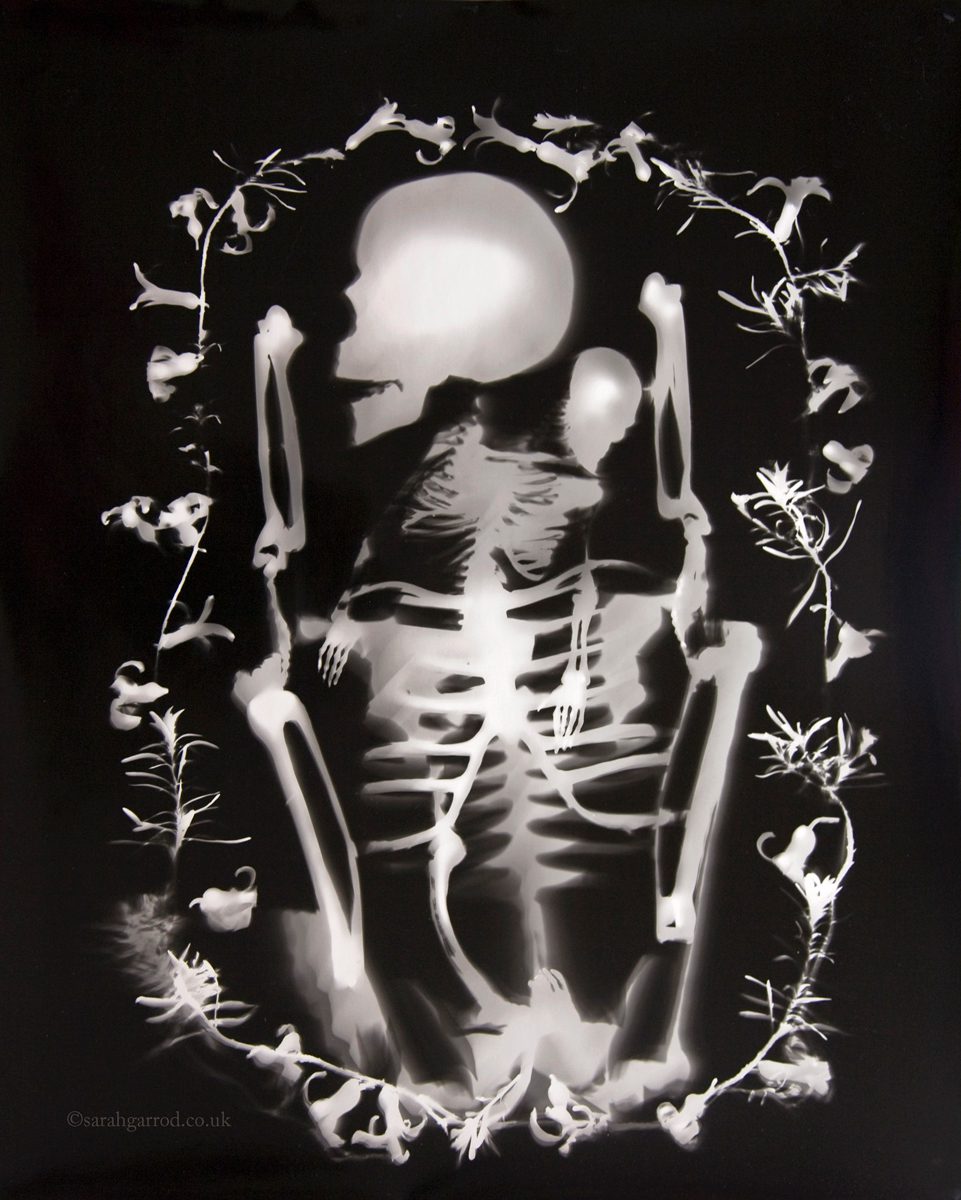
Ilford Warmtone Fibre 16x24"
Solo use in the darkroom has meant that I can put music on, dodging and burning with my hands and waving around torches and magnifiers like a dance. You really are putting yourself into the image. I also listen to science podcasts - I was pondering the mirror universe and its inversions (negatives) when making some of these.They will start a new series.
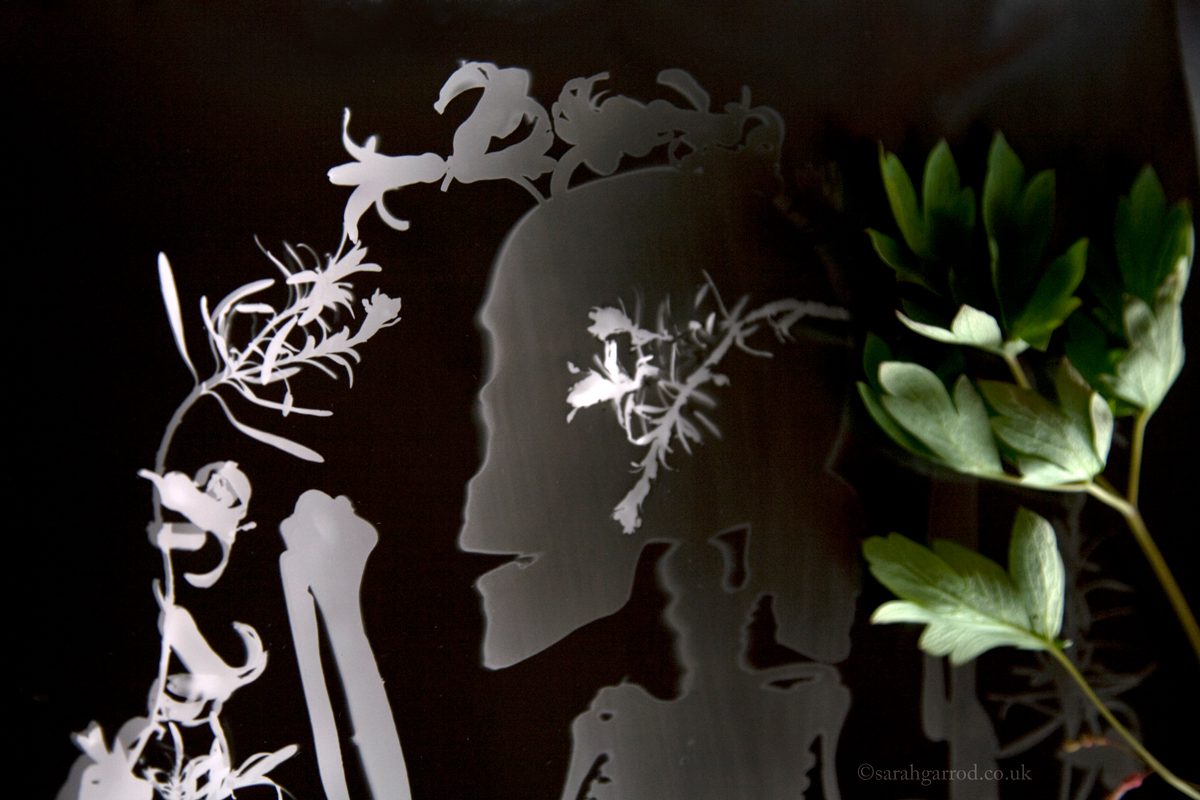
Detail of photogram
As the world starts to re-open I will go back to my trusty Holga camera, but I am grateful for the time I had with photograms. I am currently setting up my own tiny indoor darkroom with all recycled materials, and planning exhibitions, workshops and demos.
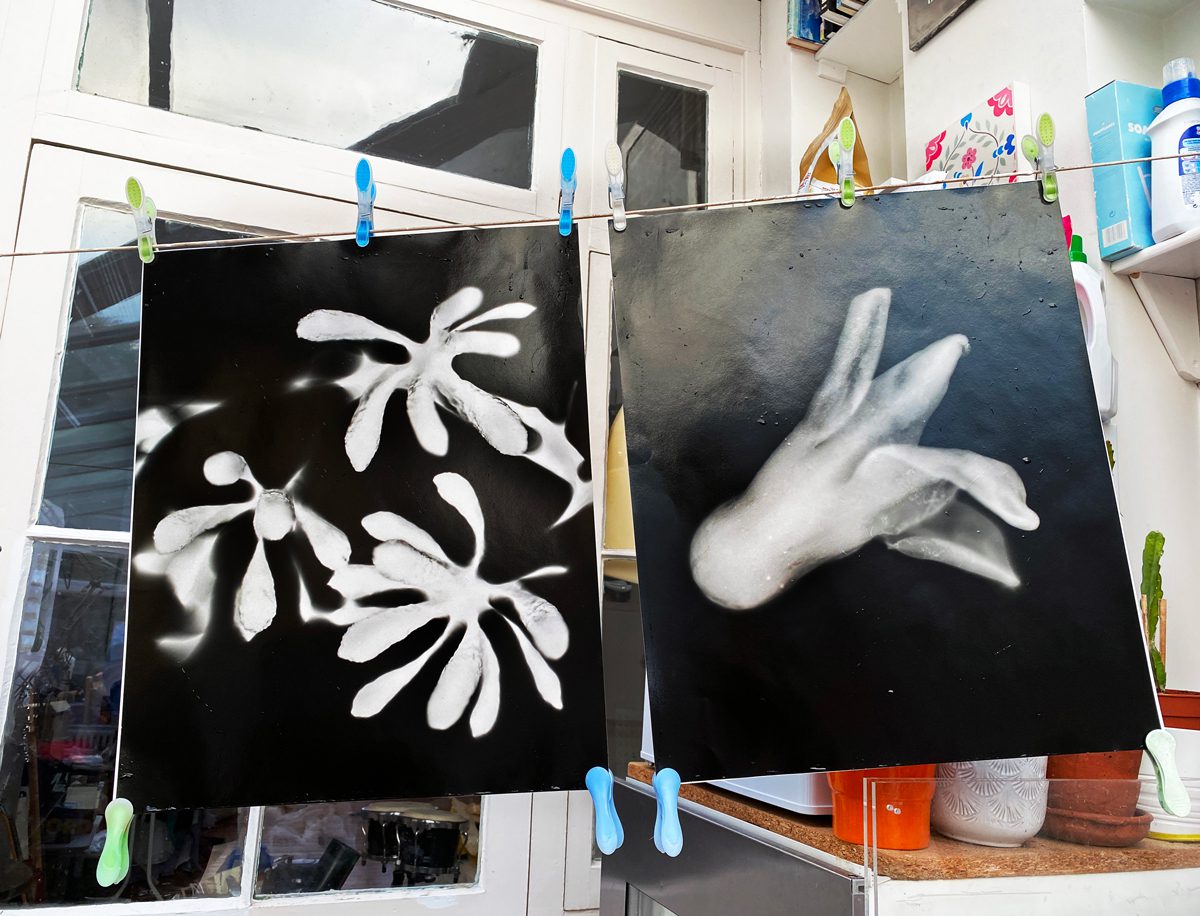
Cameraless Photos Drying (Ilford Warm Tone Gloss Fibre 16x24")
Please follow me at https://sarahgarrod.co.uk
About The Author

Sarah Garrod
Sarah is a self-taught artist coming from a background of working in TV for 20yrs. After having children, she switched career to focus-in on the possibilities of the single frame with photography, and also the intricacies of music and sound.
Sarah has worked in darkrooms in Greenwich, New Cross and Woolwich, and trained under Master Printer Tim Rudman in the specialist technique of Lith Printing. She continues to experiment with materials, using mixed-media (collage, paint, sound), cyanotype (sun-printing), and liquid emulsion (photos on 3D surfaces) . Her Fine Art photography is exhibited and sold in various galleries from Whitechapel to Spain.
Sarah harnesses the power of natural light on location, and also with her cyanotype sun-printing. Sometimes she abandons the camera altogether and makes cameraless images by painting with light. She experiments with plant alchemy to investigate the secrets of life. She explores all realms of reality: quantum physics, myths, fake news, dreams, futurism.
You can follow Sarah at:-
www.sarahgarrod.co.uk
www.facebook.com/sarahGPhotog
Insta: @SarahG.Photog







